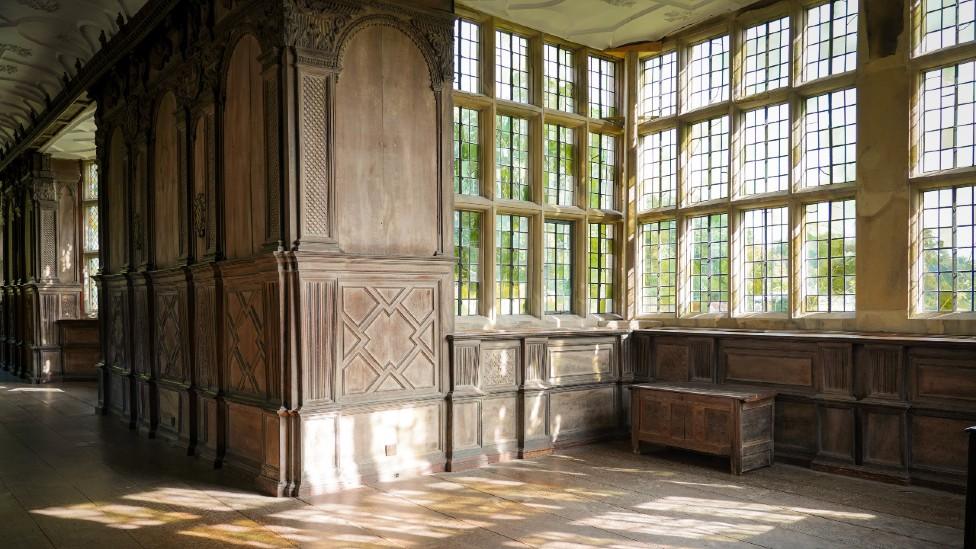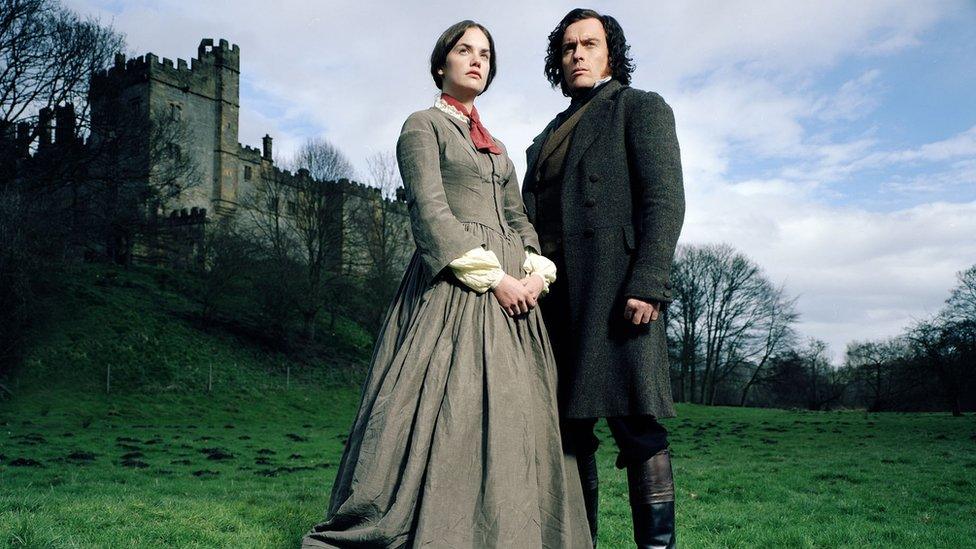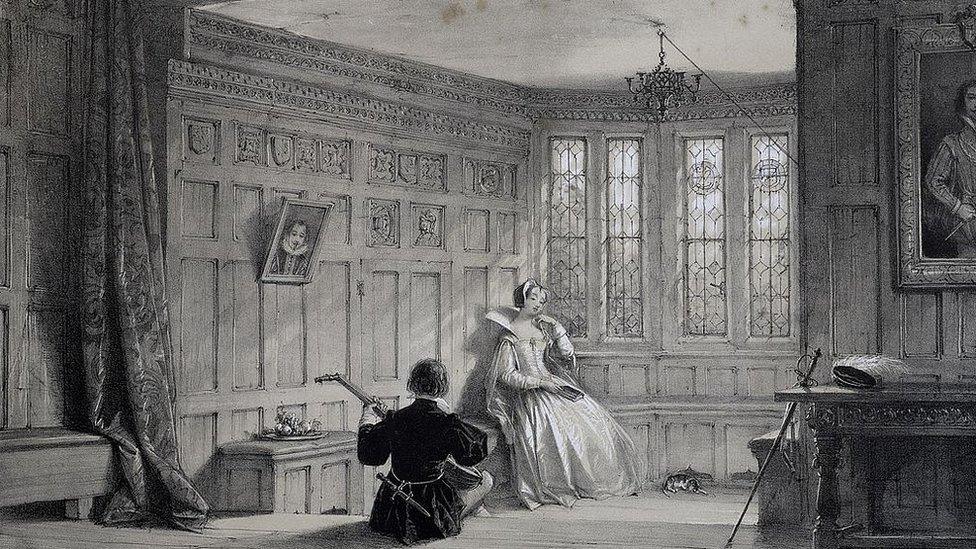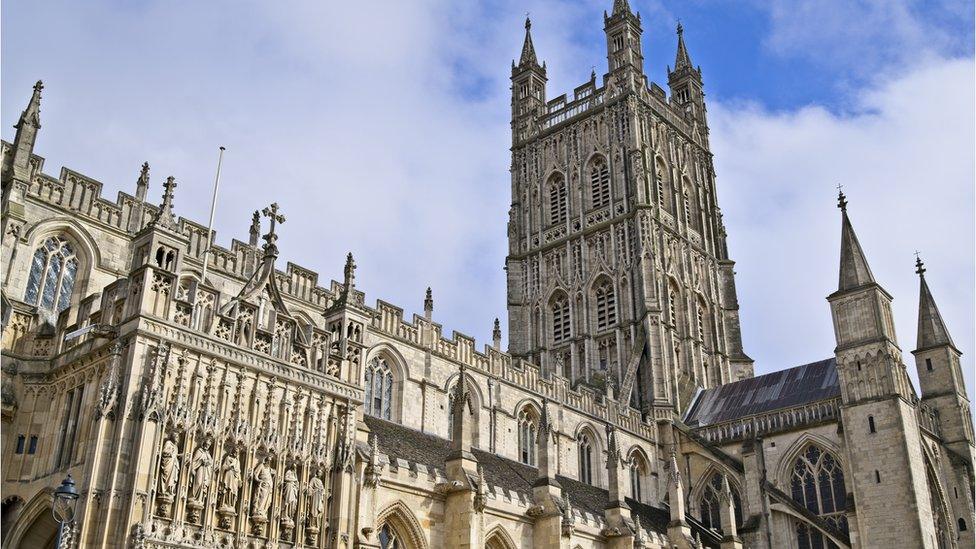Haddon Hall subsidence repairs secure funding
- Published

Part of the window ceiling corner is currently supported by a discreet prop
A famous stately home has secured thousands of pounds for vital repairs.
Haddon Hall, near Bakewell, Derbyshire, was largely built in the 16th Century and has been used in numerous films and TV shows.
But one of its main features, the 110ft (33.5m) Long Gallery, has faced serious subsidence problems in one of its windows, threatening the structure.
The bulk of the £330,000 needed is coming from the Culture Recovery Fund and the Historic Houses Foundation.

Haddon Hall was used in a 2006 adaptation of Jane Eyre
While the origins of the hall, which is still privately owned, date back to the 11th Century, much comes from the Tudor period and it is viewed as a rare survivor of that era.
But its great age brings some challenges, especially in the Long Gallery.
Lady Edward Manners said: "The main part of the room luckily is on solid ground but the bay is sinking, so to fix it is just astronomically expensive.
"It needs to be underpinned, it requires the top to be taken off, all the beautiful Elizabethan plasterwork to be preserved, the glass needs to be looked after.
"It's just an epic, extraordinary job requiring the top master craftsmen in England to do it."

The windows at Haddon have featured in a number of romantic stories and images
Haddon has been awarded just over £262,000 from the Culture Recovery Fund, external with an additional £50,000 by the Historic Houses Foundation, external (HFF) , with the rest coming from the Haddon Hall Trust
A spokesman for the HFF said: "The Historic Houses Foundation were pleased to be able to support Haddon Hall with the restoration of the Long Gallery.
"The grant provided for work at Haddon Hall shows how vital the timely provision of funds can be to secure the structural survival of an important medieval house, described by Simon Jenkins in 2003 as "the most perfect English house to survive the Middle Ages".
The project is expected to be completed by the end of July 2022.

Follow BBC East Midlands on Facebook, external, on Twitter, external, or on Instagram, external. Send your story ideas to eastmidsnews@bbc.co.uk, external.
Related topics
- Published2 April 2021

- Published9 October 2020
